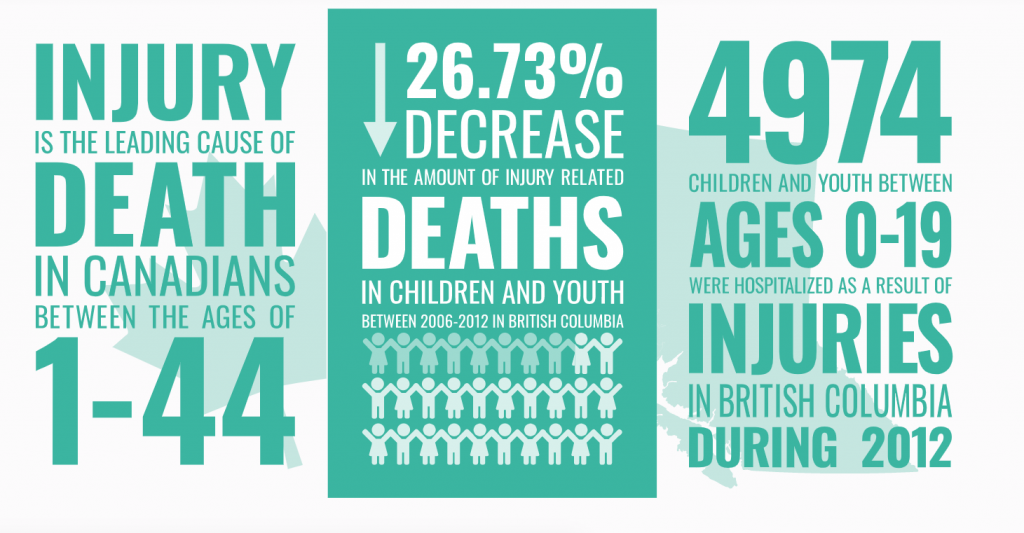A new website is available that shows injury rates by type and province in the style of a report card, an approach that allows visitors to see where evidence-based prevention policies have succeeded, and where more work needs to be done.
British Columbia, for example, scores high for enacting injury prevention policies related to distracted driving, helmets, and booster seats, but low when it comes to smoke detectors and pedestrian safety. BC achieved the top overall score for safety among the provinces and placed second in terms of policy.
The Canadian Child Safety Report Card is the visual representation of Dr. Liraz Fridman’s PhD thesis. Dr. Fridman completed her PhD under the supervision of BCIRPU Director Dr. Ian Pike and York University’s Drs. Alison Macpherson and Jessica Fraser-Thomas.
“The report card is a really important tool that provides policymakers and knowledge users with a snapshot of the injury picture in each province,” says Dr. Fridman. “It highlights the importance of implementing strong evidence-informed policies to reduce the burden of childhood injuries in Canada.”
Injuries from six of the nine causes have decreased over time, whereas rates of drowning and choking have increased. Rates of poisoning have remained stable. Falls send more Canadian children to hospital with injuries than any other cause, followed by car and cycling collisions. Drowning is the least common reason for a hospital visit after burns and choking.
Scientists prepared The Canadian Child Safety Report Card using data from the Canadian Institute for Health Information and provincial coroners’ data. They followed the injury prevention report card model used by international organizations such as the World Health Organization and UNICEF. Injury hospitalizations and deaths from all causes for children and adolescents aged zero to 19 were analyzed between 2006 and 2012.
This work was led by Dr. Macpherson, Professor at York University, Dr. Fridman, a postdoctoral fellow at the University of Calgary and Sick Kids Hospital, and Dr. Pike. Funding for this project was provided through Dr. Macpherson’s appointment as a CIHR Applied Chair in Reproductive, Child & Youth Health Services & Policy Research.
“We need to work with people at all levels of government and health care to make cities and towns safer,” said Dr. Macpherson. “This report card allows us to learn from our successes and see where we can make improvements.”
The research team previously produced The Canadian Atlas of Child & Youth Injury Prevention website to help health-care practitioners, policymakers, and researchers make informed decisions that will improve child and youth injury prevention measures in Canada. Information is presented more visually and by province on the new website.
“We’ve gathered the evidence to make it easy for safety advocates and policymakers to see where taking action could save life and limb,” said Dr. Pike. “We want to help make Canada safer for Canadian children and youth.”
View the tool at www.safetyreportcard.ca
Read more about this work in the Canadian Journal of Public Health
Read the web story by the BC Children’s Hospital Research Institute

